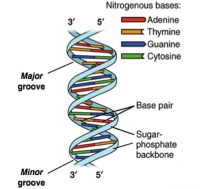If your food processing facility needs an expansion or update, construction can be a disruptive event. Throughout the process, a variety of food safety hazards can be present, potentially putting your products at risk. While the contractors you work with are skilled at their trade, protecting your brand is ultimately your responsibility.

Extra precautions are needed to minimize the food safety risks during construction, but by developing a thorough plan and following it diligently, you can keep your products, facility and employees safe.
Preparation: The Important First Steps for Safety
Having an established environmental plan before construction starts will make the construction process go smoothly and help maintain safety. If the plan your staff is following needs changes or improvements, make updates in advance of construction and be sure that your staff is up to speed before the project begins.
First, remove any equipment that can be moved from the construction zone and cover all electrical panels, open conduit and electrical outlets to minimize areas that might harbor dust or bacteria during construction.
Next, taking steps to separate the construction and production areas is crucial. Installing heavy gauge plastic sheeting or even temporary walls to isolate the construction area will help prevent cross-contamination. Any doors or wall openings on the temporary barriers should be sealed on both sides, and the gaps between the base of the barriers and the floor should be adequately sealed to keep the surrounding production areas safe. Do whatever is necessary to minimize organisms from traveling by air outside of the construction zone.
The HVAC and air handling system in the construction area should also be evaluated for cross-contamination potential. Be sure to close off or divert the airflow to prevent air movement from the construction zone to any production areas. In addition, make sure the system will be able to accommodate additional areas or space after construction is complete and make any upgrades if necessary. Thoroughly clean the HVAC system and filters before the construction process starts.
Similarly, evaluate any drains that are present in the construction zone for cross-contamination potential and take precautions to keep pathogens from passing from the construction area to the food production areas.
Make Contractors Part of Your Plan
While contractors might have years of experience in their trade, they don’t know your food safety plan. Schedule a formal food safety training session with the contractor and all members of the construction staff. Don’t allow anyone to work in the facility before completing the training. Determine which protective clothing contractors and their team will need, such as frocks, boot covers or hairnets, and provide a separate bag or place to store them during the construction process.
Designating a single entrance for contractors and construction staff will minimize confusion and avoid mistaken entries into prohibited areas. Educate them on the appropriate traffic flow as they arrive, enter the facility, and conduct their work. Their entrance should be separate from those used by office and food production employees. Have quat or alcohol hand and tool sanitizers stationed at the designated contractor entrance, and require them to sanitize any tools, materials or equipment before entering the facility. Emphasize that no mud or other debris should be tracked into the facility. Provide the necessary guidance and monitor the entrance area to prevent that from happening.

Construction staff and in-house food production staff should be separated at all times. To prevent cross-contamination, there shouldn’t be any direct paths from the construction area to the production area. No material from the construction area should ever be brought into the food production area. Contractors and construction staff should also be prohibited from using the break rooms or restrooms that are used by the facility employees. Because they won’t have access to other areas, temporary hand wash sinks may be needed for construction employees to follow frequent hand washing and sanitizing procedures.
Best Practices for Sanitation During Construction
Before demolishing and removing any walls during the construction process, apply a foam disinfectant at 800–1000 ppm without rinsing. If any equipment needs to be moved, or if there will be new equipment brought into the area, clean and disinfect it with quat at 800–1000 ppm without rinsing.
Quat should also be applied heavily on the floors around the designated construction team entrances. Foam or spray contractors’ walkways and the construction area floor every four hours at 800–1000 ppm. Allow contractors, forklifts, dollies or other wheeled carts to regularly travel through the disinfectant to keep their feet and wheels sanitized as they move throughout the construction area.
If your construction project involves new equipment installation, discuss the sanitation requirements and restrictions with a sanitation chemical provider before purchasing this equipment to ensure you have the right chemistry on hand. Any new equipment should be cleaned and sanitized, as well as the area where it will be installed, before bringing the equipment into the area. Make sure all the surfaces of the new equipment are compatible with your current cleaning chemistry and that the installation follows proper food safety guidelines. If necessary, upgrade your food safety process to accommodate the new equipment.
Transitioning from Construction to Safe Food Production
Once the construction project is complete, remove all construction materials, tools, debris, plastic sheeting and temporary walls. Seal any holes that might have occurred in the floors, walls and ceilings where equipment was moved, and repair or replace epoxy or other floor coverings. Inspect any forklifts or man lifts used during the construction, and clean and sanitize them.
Clean the HVAC and air handling system and return it to either its pre-construction settings or an updated configuration based on what the new area requires.
Continue cleaning everything in the construction area, from ceiling to floor, including lights, walls, drains, refrigeration units and all equipment following SSOPs. Note that different cleaning products containing solvents may be needed for the initial cleaning to remove cutting oil, welding flux residues, greases, and other elements from the construction process. Be sure to have those cleaning products on hand before you get to this step to avoid delays of a thorough sanitation process. Where necessary, passivate any stainless steel equipment.
Finally, test the environment. Collect a special set of swabs and monitor the results. Apply post-rinse sanitizer and then begin food production. Implement an enhanced environmental monitoring program in all areas disrupted by the construction until the data shows a return to the baseline levels. Revise your facility SSOPs in light of any changes based on the new construction.
Achieving Seamless Productivity
Expansion can mean new capabilities for your business, but lax food safety processes during construction can jeopardize the new opportunities your expansion brings. By having a strong plan in place, following it diligently, educating contractors on your plan, monitoring activity, and using effective sanitizing chemistry, you will be able to expand while protecting your brand and avoiding food safety issues.






